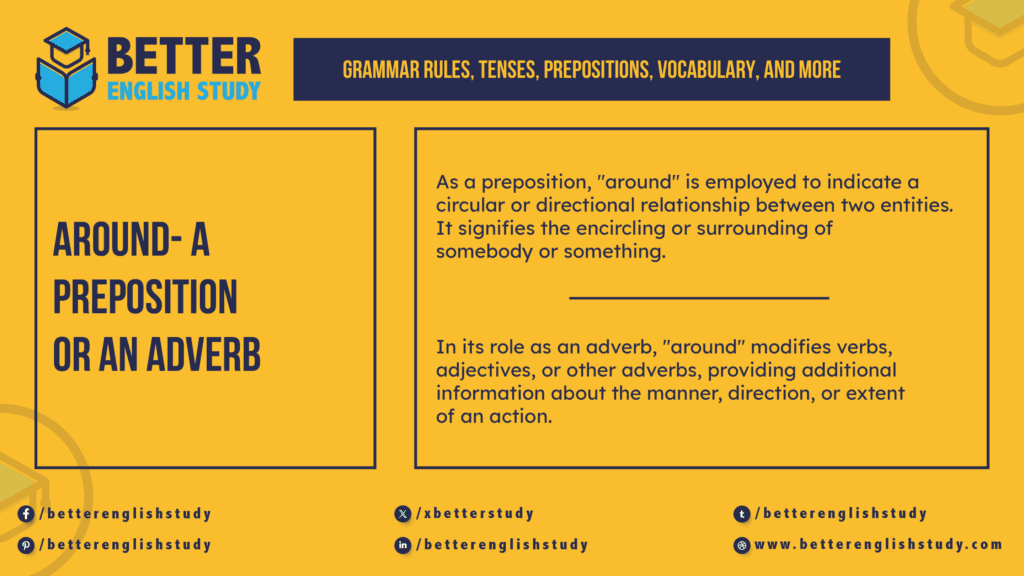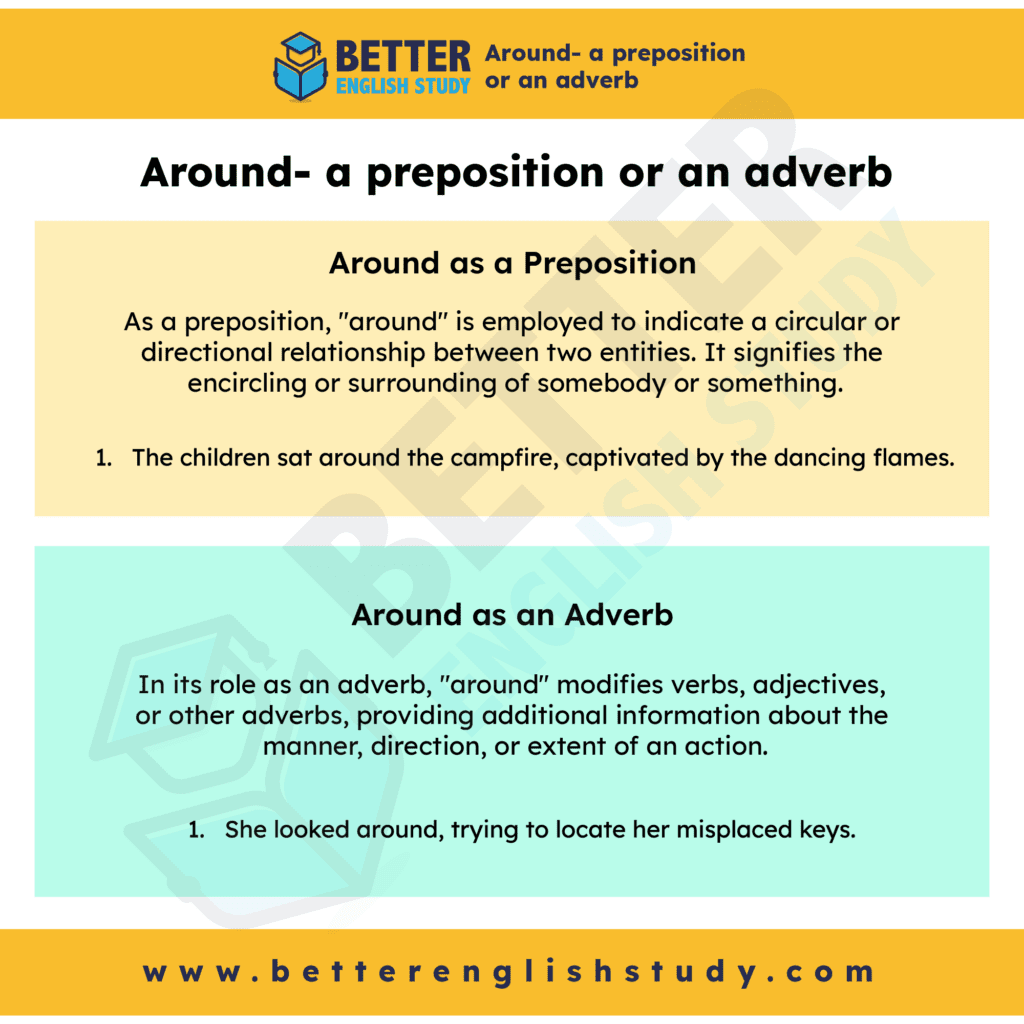
In English grammar, certain words gracefully transcend the boundaries of a single role, intriguing language enthusiasts. “Around” is one such word that often raises questions about its grammatical identity.
In this exploration, we will delve into the nuances of “around” to unravel its dual nature as both an adverb and a preposition.
Is Around a Preposition?
Yes, “around” is a versatile word that functions both as an adverb and a preposition. Understanding its role in these capacities can deepen our comprehension of how it shapes sentences and communicates relationships.
Around or Round
The terms “around” and “round” are often used interchangeably. While both can convey similar meanings, their usage has subtle differences.
“Around” is the more common term in American English, while “round” is often preferred in British English. However, both words are acceptable in various contexts.
Examples:
- She walked around the park, enjoying the beauty of nature.
- She walked round the park, enjoying the beauty of nature.
In these examples, “around” and “round” convey a similar idea of encircling the park, with the former representing American English usage and the latter British English.
Around as a Preposition
As a preposition, “around” is employed to indicate a circular or directional relationship between two entities. It signifies the encircling or surrounding of somebody or something.
Example as a Preposition:
- The children sat around the campfire, captivated by the dancing flames.
In this example, “around the campfire” conveys the circular positioning of the children in relation to the fire, illustrating the prepositional use of “around.”
Around as an Adverb
In its role as an adverb, “around” modifies verbs, adjectives, or other adverbs, providing additional information about the manner, direction, or extent of an action.
Example as an Adverb:
- She looked around, trying to locate her misplaced keys.
Here, “around” modifies the verb “looked,” offering insight into the direction of her gaze in the quest for her keys.

Surrounding Somebody/Something
An integral aspect of the prepositional use of “around” is its ability to convey the concept of surrounding somebody or something. Whether describing physical proximity or metaphorical encirclement, “around” excels in capturing this spatial relationship.
Example of Surrounding Somebody:
- A crowd gathered around the street performer, eagerly anticipating the next act.
In this instance, “around the street performer” indicates the physical proximity of the crowd surrounding the entertainer.
In conclusion, “around” emerges as a multifaceted word, seamlessly transitioning between the roles of adverb and preposition. Whether guiding us in a circular path or describing the direction of a gaze, “around” adds layers to our expressions.
So, the next time you encounter this versatile word, appreciate its ability to encircle meaning gracefully, encapsulating the essence of direction and proximity within the intricate dance of language.
